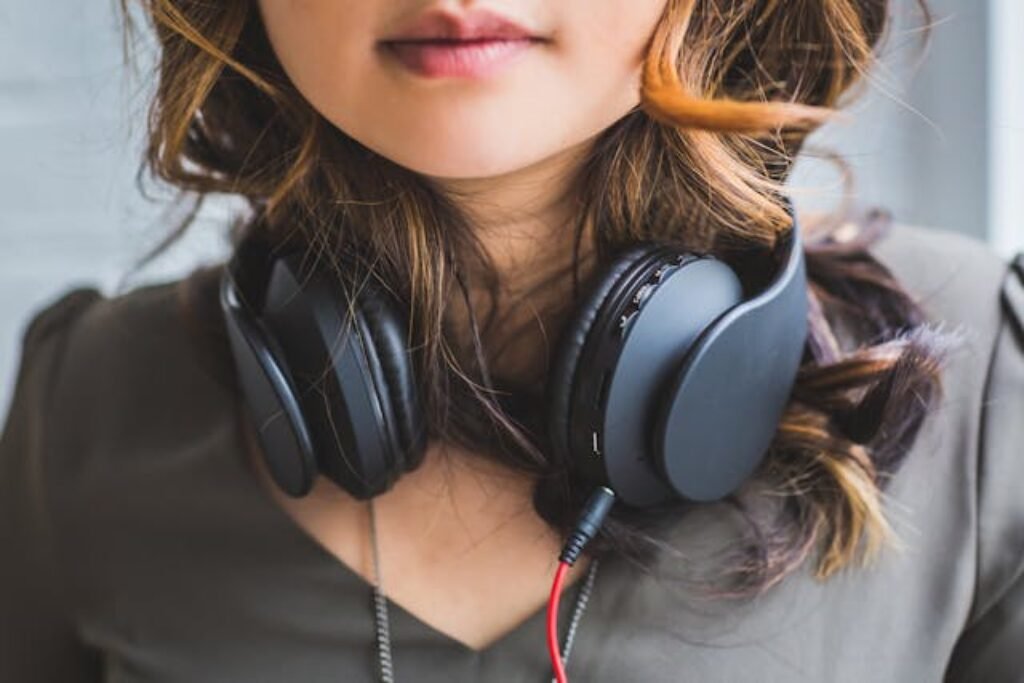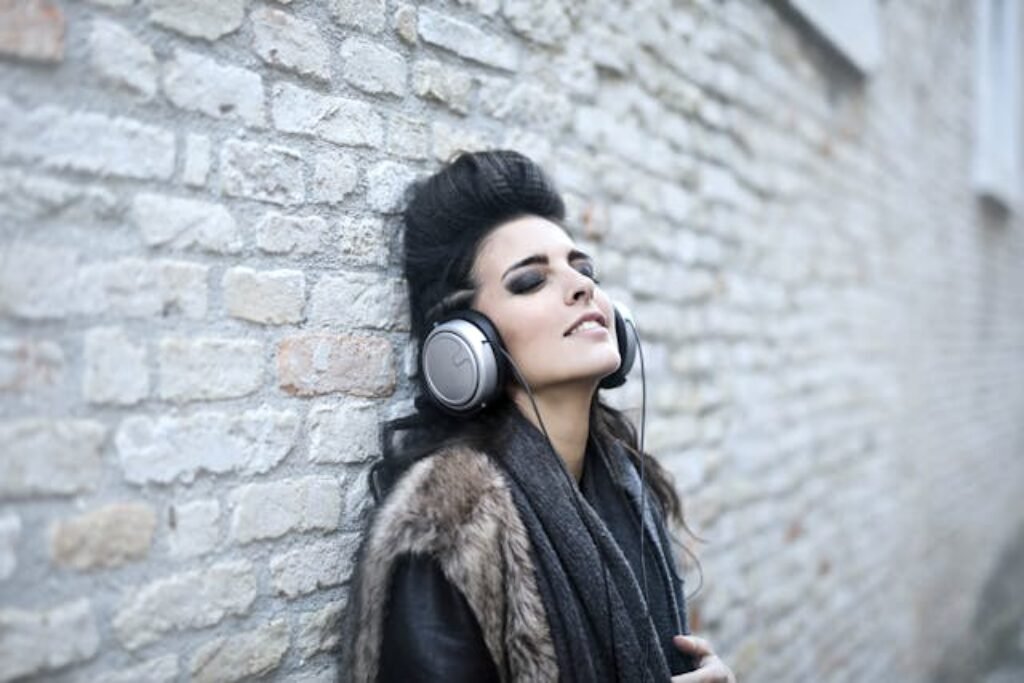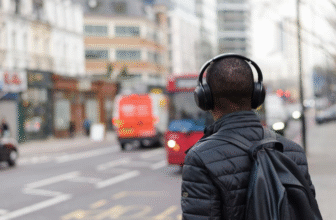- Key Features at a Glance
- Decoding Headphone Features: What Really Matters?
- Sound Quality Features: Hearing the Difference
- Connectivity Features: Wired vs. Wireless Freedom
- Noise Control Features: Silence the World (or Let it In)
- Comfort and Design Features: Wearing Headphones All Day Long
- Microphone Features: Clear Communication
- Battery & Power Features (Wireless Headphones): Staying Powered Up
- Durability & Special Features: Going the Extra Mile
- Choosing the Right Headphones for Your Needs: Matching Features to Your Lifestyle
- Best Headphones for Music Lovers/Audiophiles: Prioritizing Audio Purity
- Best Headphones for Gaming: Immersion and Communication
- Best Headphones for Sports & Working Out: Durability and Secure Fit
- Best Headphones for Travel & Commuting: Silence the Noise, Embrace Portability
- Best Headphones for Working from Home & Office: Focus and Clear Communication
- Best Headphones for Sleeping: Comfort for Side Sleepers
- Best Headphones for Kids: Safety and Durability First
- Best Budget Headphones : Value without Compromising Core Features
- Headphone Care and Maintenance: Making Your Investment Last
- Frequently Asked Questions (FAQ) About Headphone Features
- Conclusion: Your Perfect Sound Awaits
Are you tired of tinny sound, tangled wires, or distractions from the outside world ruining your audio experience? Whether you’re seeking crystal-clear audio for your favorite music, immersive sound for gaming, or focused listening during your commute, choosing the right headphones is essential. With a vast array of headphone features available today, from noise cancellation to wireless connectivity and specialized designs, navigating the choices can feel overwhelming.
This Ultimate Guide to Headphone Features is designed to demystify the world of headphones. We’ll break down the key features, explore different types of headphones, and empower you to make an informed decision, ensuring you find the perfect set of headphones to match your unique audio needs and lifestyle. At Dealibrium, we are committed to helping you not only understand these features but also find the best deals on headphones that deliver exceptional value and performance.
Key Features at a Glance
| Feature Type | What It Is | Who It’s For |
|---|---|---|
| Noise Cancellation | Blocks outside noise | Commuters, travelers, office workers |
| Wireless (Bluetooth) | Connects without cables | Anyone needing convenience and portability |
| Sound Quality | Clarity, bass, and detail | Music lovers, audiophiles |
| Built-in Microphone | For calls and gaming | Professionals, gamers |
Decoding Headphone Features: What Really Matters?

Choosing the right headphones involves understanding the features that truly impact your listening experience. Let’s explore the crucial elements:
Sound Quality Features: Hearing the Difference
Sound quality is paramount for any headphone purchase. It encompasses several technical aspects that define how you perceive audio.
Driver Type & Size: The Heart of the Sound
The driver is the engine of your headphones, responsible for converting electrical signals into sound waves you hear. Different driver technologies offer unique sonic characteristics:
- Dynamic Drivers: The most common type, dynamic drivers use a diaphragm, voice coil, and magnets to produce sound. They are known for delivering robust bass, and are generally versatile for various music genres.
- Planar Magnetic Drivers: These drivers utilize a thin diaphragm with embedded wires suspended between magnets. Planar magnetic headphones are prized for their exceptional detail, fast response, and low distortion, offering a very refined sound experience, often favored by audiophiles.
- Electrostatic Drivers: Using a thin membrane between two conductive plates, electrostatic headphones require specialized amplifiers due to their high impedance and voltage needs. They are known for unparalleled clarity and detail retrieval but are typically more expensive and less portable.
Driver size, often measured in millimeters, can also influence sound, particularly bass response. Larger drivers can generally move more air, potentially resulting in deeper and more powerful bass (SoundGuys’ Headphones Buying Guide).
Frequency Response: The Range of Sound
Frequency response measures the range of frequencies a headphone can reproduce, typically expressed in Hertz (Hz) to Kilohertz (kHz). The standard range of human hearing is 20Hz to 20kHz. A wider frequency response doesn’t necessarily guarantee better sound, but it indicates the headphone’s capability to reproduce the full spectrum of audible frequencies.
- Bass Frequencies (20Hz – 250Hz): The low end, responsible for the rumble and thump in music.
- Midrange Frequencies (250Hz – 4kHz): Where vocals and most instruments reside, crucial for clarity and detail.
- Treble Frequencies (4kHz – 20kHz): The high end, responsible for sparkle, airiness, and detail in the upper registers.
Impedance: Matching Headphones to Your Devices
Impedance, measured in Ohms (Ω), indicates how much resistance headphones offer to an electrical signal.
- Low Impedance Headphones (below 50Ω): Easier to drive, they work well with smartphones, laptops, and devices with less powerful amplifiers.
- High Impedance Headphones (above 100Ω): Require more power to perform optimally. They are often paired with dedicated headphone amplifiers to achieve their full sonic potential, delivering cleaner and more detailed sound, especially at higher volumes. Using high impedance headphones with low-power devices might result in lower volume and reduced dynamics.
Sensitivity (SPL): Loudness Efficiency
Sensitivity, or Sound Pressure Level (SPL), measured in decibels per milliwatt (dB/mW), indicates how loud headphones will be for a given amount of power. Higher sensitivity means headphones can achieve louder volumes with less power. This is particularly important for portable devices with limited output power.
Sound Signature (Audio Profile): Personalizing Your Sound
Sound signature refers to the overall tonal character of headphones – how they emphasize different frequencies. Common sound signatures include:
- Balanced/Neutral: Aims for accurate reproduction across the frequency spectrum, without emphasizing any particular range. Favored for studio work and critical listening.
- Bass-Heavy: Emphasizes low frequencies, delivering a powerful bass response, popular for genres like EDM, hip-hop, and pop.
- V-Shaped: Emphasizes both bass and treble, creating a “V” shape in the frequency response curve, often preferred for a more exciting and dynamic sound, suitable for various genres.
- Warm: Slightly elevated bass and mids, providing a rich and smooth sound, often considered pleasant for extended listening.
- Bright: Emphasizes higher frequencies, offering detailed treble and clarity but can sometimes sound harsh if not well-controlled.
Soundstage & Imaging: Creating a Sonic Space
Soundstage refers to the perceived width and depth of the audio space. Headphones with a wider soundstage can create a more immersive and spacious listening experience, making it feel like sounds are coming from around you rather than directly inside your ears. Imaging is the ability to accurately pinpoint the location of sounds within that soundstage. These features are particularly crucial for gaming and audiophiles seeking a realistic and three-dimensional audio experience.
Codecs (for Bluetooth): Wireless Audio Quality
For wireless headphones, audio codecs play a vital role in determining sound quality over Bluetooth. Codecs compress and decompress audio data for wireless transmission. Common codecs include:
- SBC: The standard codec, offering basic audio quality.
- AAC: A more efficient codec, often used by Apple devices, providing better quality than SBC.
- aptX & aptX HD: Qualcomm’s codecs, designed for higher-resolution audio and lower latency.
- LDAC: Sony’s codec, capable of transmitting high-resolution audio wirelessly, offering the highest quality among common Bluetooth codecs.
Choosing headphones that support higher-quality codecs like aptX HD or LDAC can result in a noticeable improvement in wireless audio fidelity, approaching wired sound quality.
Connectivity Features: Wired vs. Wireless Freedom

Headphones offer two primary connectivity options: wired and wireless, each with distinct advantages.
Wired Headphones: Reliability and Fidelity
Wired headphones connect to your audio source via a cable, typically using a 3.5mm headphone jack or other connectors like USB-C.
Pros:
- Reliability: No batteries to charge, always ready to use.
- Potentially Higher Audio Fidelity: Wired connections can sometimes offer superior audio quality due to no compression or reliance on Bluetooth codecs.
- Lower Latency: Wired connections have minimal latency, crucial for gaming and audio-sensitive applications.
Cons:
- Less Convenient & Mobile: Cables can tangle and restrict movement.
- Jackless Devices: Modern smartphones are increasingly removing the 3.5mm headphone jack, requiring adapters.
Wireless Headphones (Bluetooth): Convenience and Mobility
Wireless headphones, leveraging Bluetooth technology, eliminate cable clutter and offer freedom of movement.
Pros:
- Convenience & Freedom: Move freely without being tethered to your device. Ideal for commuting, workouts, and general on-the-go use.
- Multipoint Pairing: Some wireless headphones can connect to multiple devices simultaneously, seamlessly switching between your phone and laptop, for example.
- Advanced Features: Many wireless models offer features like touch controls, voice assistant integration, and active noise cancellation.
Cons:
- Charging Required: Wireless headphones need to be charged regularly.
- Potential Audio Quality Trade-offs: Bluetooth codecs, while improving, can still introduce some audio compression compared to wired connections, although high-quality codecs minimize this. (Best Headphone Center’s Buying Guide).
- Latency: Bluetooth can introduce slight latency, although modern Bluetooth versions and codecs are minimizing this, it might still be a concern for competitive gaming or professional audio work.
USB-C, 3.5mm Jack, & Lightning: Connector Types
Understanding headphone connectors is essential for compatibility:
- 3.5mm Headphone Jack: The traditional and most universal analog audio connector. While declining in smartphones, it remains common on laptops, audio interfaces, and older devices.
- USB-C: A modern digital connector increasingly used in smartphones, laptops, and newer audio devices. USB-C can support both digital audio and charging, and some headphones utilize it for direct digital audio input, potentially bypassing the device’s internal DAC (Digital-to-Analog Converter) for potentially higher quality.
- Lightning: Apple’s proprietary connector, primarily found on iPhones and iPads lacking a 3.5mm jack. Lightning headphones often incorporate a DAC within the headphone connector itself for digital audio.
The trend towards removing the 3.5mm jack in smartphones has driven the popularity of wireless earbuds and USB-C or Lightning headphones, although 3.5mm remains prevalent in the wider audio world for its universality and simplicity.
Wireless for TV: Low Latency for Immersive Viewing
For TV and home theater use, wireless headphones designed for TV are optimized for low latency. Standard Bluetooth can introduce noticeable audio delay, causing lip-sync issues with video. Headphones designed for TV often utilize proprietary RF (Radio Frequency) wireless or low-latency Bluetooth codecs like aptX Low Latency to minimize audio lag and ensure synchronized audio-visual experience for movies and TV shows.
Noise Control Features: Silence the World (or Let it In)

In noisy environments or when you need focused listening, noise control features are invaluable. Headphones employ two main approaches to manage external sound:
Passive Noise Isolation: Physical Barrier to Sound
Passive noise isolation relies on the physical design of the headphones to block out external noise.
- Over-ear headphones with closed-back designs and well-sealing earcups offer the best passive isolation by physically encompassing the ears and creating a barrier against external sounds.
- In-ear headphones achieve noise isolation through their snug fit within the ear canal, effectively sealing off the ear from ambient noise. Using properly sized ear tips is crucial for optimal isolation with earbuds.
Active Noise Cancellation (ANC): Countering Sound with Sound
Active Noise Cancellation (ANC) utilizes advanced technology to actively reduce ambient sounds. ANC headphones use microphones to detect external noise, and then generate “anti-noise” waves that are inverse in phase to cancel out the incoming noise.
- Effectiveness: ANC is most effective at reducing low-frequency, constant noises like engine hums, airplane cabin noise, and traffic rumble, making them ideal for travel and noisy commutes. ANC is less effective against high-frequency and sudden, sharp noises.
- Battery Powered: ANC requires battery power to operate, impacting battery life on wireless headphones.
- Sound Quality Impact: Some early ANC implementations could slightly affect sound quality. However, modern ANC technology has significantly improved, with high-end headphones offering excellent noise cancellation with minimal impact on audio fidelity.
Transparency Mode/Ambient Sound Mode: Awareness of Your Surroundings
Transparency mode, also known as ambient sound mode, is a feature found in many noise-canceling headphones and earbuds. It uses microphones to let in external sounds, allowing you to hear your surroundings without removing your headphones. This is incredibly useful for situational awareness, safety when walking in urban environments, or having brief conversations without pausing your music.
Noise Cancellation vs. Noise Isolation: Which is Better?
| Feature | Noise Cancellation (ANC) | Noise Isolation (Passive) |
|---|---|---|
| Technology | Active electronic noise cancellation | Physical design and earcup seal |
| Effectiveness | Best for low-frequency, constant noises | Effective across a broader range of frequencies |
| Power | Requires battery power | No power required |
| Sound Quality | Can potentially have a slight impact, improving in newer models | Generally no impact on sound quality |
| Use Cases | Travel, noisy commutes, focused work | General noise reduction, simpler, always available |
The “better” option depends on your needs. If you need to eliminate persistent low-frequency noise, ANC is excellent. For general noise reduction without batteries and potentially across a wider range of frequencies, passive isolation is reliable and always active. Some headphones combine both for enhanced noise control.
Comfort and Design Features: Wearing Headphones All Day Long
Comfort is crucial, especially for extended listening sessions. Design features play a key role in headphone comfort:
Wearing Style: Over-Ear, On-Ear, In-Ear
- Over-Ear (Circumaural) Headphones: Earcaps fully encompass your ears, distributing pressure around the ear rather than on it. Generally considered the most comfortable for long listening sessions and offer the best passive noise isolation. Can be bulkier and less portable.
- On-Ear (Supraaural) Headphones: Earcups rest on your ears. More compact and portable than over-ear. Can cause ear fatigue and pressure over extended use. Offer less noise isolation than over-ear.
- In-Ear (Earbuds) Headphones: Fit inside your ear canal. Extremely portable and discreet. Comfort depends heavily on proper fit and eartip selection. Can provide good noise isolation when properly fitted, but can also feel invasive for some users over long periods.
| Feature | Over-Ear (Circumaural) | On-Ear (Supraaural) | In-Ear (Earbuds) |
|---|---|---|---|
| Comfort (Long sessions) | Generally best | Moderate | Fit-dependent, can be fatiguing |
| Portability | Least portable | More portable | Most portable |
| Noise Isolation | Best passive isolation | Moderate passive isolation | Good with proper fit |
| Soundstage | Potentially wider | Can be more constrained | Can be intimate |
| Bulkiness | Bulkiest | Moderate | Least bulky |
Headband and Earcup Design: Ergonomics Matter
- Adjustable Headbands: Essential for a personalized fit and even weight distribution for minimizing discomfort.
- Cushioned Earcups: Padding material (memory foam, pleather, fabric) impacts comfort and sound isolation.
- Earcup Swivel and Rotation: Allow earcups to pivot and adjust to the shape of your head for a better seal and comfort.
- Clamping Force: The pressure headphones exert on your head. Too much clamping force can be uncomfortable; too little might compromise sound isolation and stability.
Materials: Comfort, Durability, & Aesthetics
Materials used in headphones impact their comfort, durability, and overall feel. Headband and earcup materials range from:
- Leather & Pleather (Synthetic Leather): Premium feel, can be less breathable than fabric. Pleather is a vegan alternative.
- Fabric (Mesh, Velour): More breathable and comfortable for hot climates, but might be less durable and offer less noise isolation than leather/pleather.
- Metal vs. Plastic: Metal components (headband arms, hinges) generally enhance durability but can add weight. High-quality plastics can be durable and lightweight.
Weight and Ergonomics: Lightness for Prolonged Use
Lightweight headphones are crucial for comfort during extended use. Ergonomic designs that distribute weight evenly and conform to the shape of your head contribute significantly to long-term wearability.
Portability & Foldability: Headphones on the Go
For users on the move, portability is a key factor.
- Folding Designs: Many over-ear and on-ear headphones feature folding mechanisms to reduce their size for storage in cases or bags, making them travel-friendly.
- Swiveling Earcups: Earcups that swivel flat can make headphones less bulky to carry around the neck when not in use.
- Carrying Cases/Pouches: Included cases or pouches protect headphones during transport and storage, essential for maintaining their condition.
Microphone Features: Clear Communication

For communication, built-in microphones are essential in many headphones, especially for gaming, calls, and voice assistants.
Microphone Quality: Clarity for Voice
Microphone quality is crucial for clear communication, impacting how well your voice is transmitted during calls, online meetings, and in-game chat. Key aspects of microphone quality include clarity, sensitivity, and frequency response for voice reproduction.
Noise Suppression for Calls: Reducing Background Noise
Noise suppression technology in headphone microphones reduces background noise picked up by the mic, ensuring clearer voice transmission even in noisy environments. This feature is crucial for professional use and clear communication during calls.
Boom Mics vs. Integrated Mics: Mic Placement Matters
- Boom Mics: A dedicated microphone extended on a boom arm, typically found in gaming headsets. Boom mics are positioned closer to the mouth, offering better voice pickup and noise isolation compared to integrated mics, making them ideal for gaming communication and professional voice recording.
- Integrated Mics: Microphones built into the earcup or cable, more common in general-purpose wireless headphones and earbuds. Integrated mics are more discreet and convenient for everyday use but might offer slightly less voice clarity than boom mics in noisy environments.
Voice Assistant Integration: Hands-Free Control
Many modern headphones, especially wireless models, offer voice assistant integration (Siri, Google Assistant, Alexa). This allows for hands-free control of music playback, calls, information access, and smart device control using voice commands, adding convenience to daily use.
Battery & Power Features (Wireless Headphones): Staying Powered Up
Battery life and power management are crucial considerations for wireless headphones.
Battery Life: Hours of Wireless Freedom
Battery life, measured in hours of playtime on a single charge, is a primary concern for wireless headphone users. Battery life varies significantly depending on the model, features used (like ANC), and volume levels. Longer battery life is essential for all-day use or extended travel without frequent charging.
Fast Charging: Quick Power Boosts
Fast charging capabilities allow you to gain several hours of playtime with just a short charging time (e.g., minutes of charging providing hours of playback). This is incredibly convenient when you’re in a hurry or realize your battery is low before heading out.
Power Saving Modes: Extending Playtime
Some wireless headphones incorporate power-saving modes that automatically power off headphones after a period of inactivity or optimize power consumption to extend battery life.
Battery Type: Replaceable vs. Non-Replaceable
Most modern wireless headphones use non-replaceable, rechargeable lithium-ion batteries for sleeker designs and integrated features. Some older or specialized models might offer replaceable batteries, offering the advantage of extending product lifespan if batteries degrade but are less common in mainstream consumer headphones now.
Durability & Special Features: Going the Extra Mile

Beyond core audio and comfort, some headphones offer additional features enhancing their versatility and longevity.
Water & Dust Resistance (IP Ratings): Protection from the Elements
Water and dust resistance, indicated by IP ratings (Ingress Protection), are increasingly important, especially for sports headphones and earbuds. IP ratings indicate the level of protection against solid objects (dust) and liquids (water). For example, IPX4 indicates splash resistance (suitable for sweat), while IPX7 or higher signifies water submersion resistance (potentially suitable for swimming, depending on specific rating and manufacturer claims).
Durability & Build Quality: Designed to Last
Build quality and durability refer to the materials and construction of the headphones, influencing their lifespan and ability to withstand daily wear and tear. Look for headphones with robust materials, reinforced stress points (hinges, cable connections), and durable headband and earcup construction for long-term reliability.
Bone Conduction Technology: Hearing Sound Through Bone
Bone conduction headphones are a unique type of headphone that transmits sound vibrations through your skull bones directly to your inner ear.
- Open-Ear Design: Bone conduction headphones typically feature an open-ear design, leaving your ear canals unobstructed, allowing you to hear ambient sounds while listening to audio, useful for safety in traffic or staying aware of surroundings.
- Situational Awareness: Ideal for activities where situational awareness is crucial, such as cycling, running outdoors, or working in environments where you need to hear colleagues.
- Comfort for some, different sound: Can be more comfortable for users who dislike in-ear pressure or over-ear heat build-up. Sound quality and bass response typically differ from traditional headphones; bone conduction often prioritizes clarity and situational awareness over deep bass and rich soundstage.
Volume Limiting (Kids Headphones): Hearing Safety for Children
Volume limiting is a crucial safety feature in kids’ headphones, designed to restrict the maximum volume output to safe levels (typically around 85dB, as recommended by health organizations) to protect children’s delicate hearing from noise-induced hearing loss. Parents should prioritize volume-limiting headphones for children to ensure safe listening habits.
Translation Features: Emerging Technology
Some emerging headphones are exploring real-time language translation features. While still relatively niche, these headphones aim to translate spoken language in real-time, potentially aiding communication across language barriers. This feature is an evolving area in headphone technology, indicating future possibilities for feature integration.
Other Specialized Features
Depending on specific headphone types and target audiences, other specialized features can include:
- Heart Rate Monitoring (Sports Earbuds): Some sports earbuds integrate heart rate sensors for fitness tracking.
- Spatial Audio/Surround Sound Processing (Gaming Headphones): Enhanced audio processing for more immersive and directional sound in gaming and movies.
- Customizable EQ & Sound Profiles: Apps that allow users to personalize the sound signature to their preferences.
Choosing the Right Headphones for Your Needs: Matching Features to Your Lifestyle
Understanding headphone features is the first step. Now, let’s consider how to choose the perfect set based on your specific needs and typical usage scenarios:
Best Headphones for Music Lovers/Audiophiles: Prioritizing Audio Purity
For music enthusiasts and audiophiles who prioritize sound quality above all else, certain headphone features and types become crucial:
- Over-Ear, Open-Back Headphones: Often favored for critical listening at home, open-back designs offer a wider, more natural soundstage, and detailed, balanced audio. Consider models with planar magnetic or high-quality dynamic drivers for top-tier sound. Brands like Grado, Beyerdynamic, and Sennheiser are renowned in the audiophile space.
- Wired Connection: For purists, a wired connection often remains the gold standard, eliminating any potential compression or quality loss from wireless codecs.
- Sound Signature: Opt for a balanced or neutral sound signature for accurate music reproduction, allowing you to hear music as intended. Explore options with a slightly warm or V-shaped signature if you prefer specific sonic flavors, but prioritize overall clarity and detail.
- Impedance Matching: Consider headphone impedance and your source device. Higher impedance headphones might necessitate a dedicated headphone amplifier to drive them optimally for the best sound.
- Codecs (if wireless is essential): If wireless is a must, prioritize headphones supporting high-resolution codecs like LDAC or aptX HD for the best possible wireless audio fidelity.
Recommendation: For audiophiles seeking open-back sound at a competitive price, the Grado SR325x is an expert pick praised for its sound quality and comfort. For luxurious home listening with wired connectivity, Beyerdynamic Amiron (What Hi-Fi?’s Best Headphones) offers exceptional comfort and sound.
Best Headphones for Gaming: Immersion and Communication

Gaming headphones are engineered for immersive gameplay and clear communication, requiring a specific set of features:
- Closed-Back Design: Essential for isolating you from external distractions and preventing sound leakage that can disturb others or be picked up by the microphone.
- Surround Sound/Spatial Audio: Crucial for directional audio cues in games, helping you pinpoint enemy positions and enhancing immersion. Some gaming headphones utilize virtual surround sound processing to simulate a multi-speaker setup.
- Boom Microphone: A dedicated boom microphone ensures clear voice communication with teammates, essential for online multiplayer games. Noise-canceling microphones further enhance clarity in noisy environments.
- Comfort: Long gaming sessions demand comfortable headphones with breathable earcups, adjustable headbands, and low clamping force. Look for memory foam padding and lightweight designs.
- Low Latency (for wireless): For wireless gaming headsets, low latency is critical to avoid audio delay, which can be disruptive in fast-paced games. Aim for headsets with low-latency wireless technologies or wired options for the absolute lowest latency.
Brands Known for Gaming: Razer, SteelSeries, Logitech, HyperX, Astro Gaming
Best Headphones for Sports & Working Out: Durability and Secure Fit
Sports headphones and earbuds are designed to withstand sweat, stay securely in place during vigorous movement, and provide motivational audio for workouts:
- In-Ear or True Wireless Earbuds (Sport-focused design): Earbuds are generally preferred for sports due to their compact size and secure fit. Look for models with ear hooks, wings, or fins for enhanced stability during running and exercise. True wireless earbuds offer maximum freedom of movement without any connecting cables.
- Water and Sweat Resistance (IPX Rating): Crucial for protecting headphones from sweat and rain. Look for an IPX4 rating for sweat resistance and higher ratings (IPX7 or more) for more robust water protection, potentially suitable for swimming (check manufacturer specifications).
- Wireless (Bluetooth): Bluetooth connectivity is essential for cordless freedom during workouts.
- Comfort & Secure Fit: Prioritize a comfortable and secure fit that stays put during vigorous activity. Multiple eartip sizes are crucial for in-ear earbuds to achieve a proper seal and stability.
- Durability: Sports headphones should be built to withstand the rigors of workouts and potentially outdoor elements.
Recommendation: For exercise, Sony WF-C700N wireless earbuds (AudioChamps – How Do I Choose a Pair of Headphones?) offer a blend of comfort, sound quality, and stability suited for active users.
Best Headphones for Travel & Commuting: Silence the Noise, Embrace Portability
For travel and commuting, noise cancellation and portability are key:
- Noise-Canceling Headphones (Over-Ear or Earbuds): Active Noise Cancellation (ANC) is invaluable for blocking out airplane cabin noise, train rumble, and city sounds during commutes. Over-ear ANC headphones generally offer more effective noise cancellation, while ANC earbuds are more compact and portable.
- Portability & Foldability (Over-Ear): Over-ear travel headphones should be foldable to reduce bulk for packing in bags and luggage.
- Comfort (Over-Ear for Long Flights): For long flights, over-ear headphones are often more comfortable for extended wear than earbuds.
- Good Battery Life (Wireless): Essential for long journeys, ensuring your headphones last your entire trip.
- Wired Option (Backup): Consider headphones that also offer a wired connection as a backup if the battery runs out or for in-flight entertainment systems.
- Transparency Mode: Useful for situational awareness in airports, train stations, or urban environments.
Recommendation: For best-in-class noise cancellation for travelers, the Bose QuietComfort Ultra Headphones (AudioChamps – How Do I Choose a Pair of Headphones?) are frequently cited as top performers.
Best Headphones for Working from Home & Office: Focus and Clear Communication
For working from home or in an office environment, comfort for long wear, focus, and clear communication are primary needs:
- Over-Ear or On-Ear Headphones (Comfort focus): Comfort for extended wear is paramount for work. Over-ear headphones are often favored for long sessions, while on-ear can be a lighter alternative, though potentially less isolating.
- Closed-Back Design: Helps minimize distractions for you and those around you, preventing sound leakage in quiet office environments.
- Good Microphone Quality (with noise suppression): Essential for clear online meetings and calls. A boom mic offers superior voice clarity, but integrated mics in wireless headphones can also suffice, especially with noise suppression features.
- Comfortable for Glasses Wearers: If you wear glasses, consider headphone earcups with shallower pads or designs that minimize pressure on your glasses frames for better long-term comfort.
- Balanced Sound Signature: For general office use and varied audio content (music, calls, presentations), a balanced sound signature is versatile and avoids fatigue.
- Wireless or Wired (Depending on Mobility Needs): Wireless headphones offer freedom to move around your workspace, while wired options are always ready and don’t require charging.
Best Headphones for Sleeping: Comfort for Side Sleepers

Sleep headphones are designed for comfortable wear while sleeping, often focusing on minimal bulk and soft materials:
- In-Ear (Sleep Earbuds) or Specialized Headband Headphones: Sleep earbuds are designed to be very small and low-profile to minimize pressure when lying on your side. Headband headphones integrate flat speakers into a soft headband for comfortable side sleeping.
- Comfort & Low Profile: Crucial for sleeping comfort. Look for soft, lightweight materials and designs that minimize pressure on your ears or head when lying down.
- Wireless (Bluetooth): Wireless connection eliminates cable entanglement during sleep.
- Noise Isolation/Noise Masking: Some sleep headphones offer noise isolation or even active noise masking features to block out snoring or ambient noises and promote restful sleep.
Best Headphones for Kids: Safety and Durability First
Kids’ headphones prioritize hearing safety and durability:
- Volume Limiting: Essential to protect children’s hearing. Volume limiting ensures safe sound levels for kids. Ensure headphones have a built-in volume limiter to cap the maximum sound output at safe levels (85dB recommended).
- Over-Ear or On-Ear (Comfort & Safety): Over-ear and on-ear headphones are generally safer for kids than in-ear earbuds, as earbuds inserted too deeply can pose risks.
- Durable & Robust Build: Kids can be tough on headphones. Look for models made from durable, child-safe materials that can withstand rough handling.
- Comfort & Adjustable Fit: Comfort is important for children to wear headphones without discomfort. Adjustable headbands ensure a proper fit as they grow.
- Fun & Appealing Designs: Kids’ headphones often come in bright colors and playful designs to make them more appealing to children.
Best Budget Headphones : Value without Compromising Core Features
Finding budget-friendly headphones that still deliver good performance is achievable:
- Prioritize Essential Features: Focus on core features that matter most to you, such as sound quality, comfort, or noise isolation. You might need to compromise on advanced features like top-tier ANC or premium materials at lower price points.
- Reputable Entry-Level Brands: Brands like Sony, JBL, Anker Soundcore, and 1More offer well-regarded budget-friendly options across different headphone types.
- Wired Options Offer Great Value: Wired headphones often provide excellent sound quality for their price due to lower manufacturing complexity compared to wireless models.
- Consider Award-Winning Budget Models: Expert reviews often highlight exceptional budget headphones. For example, the Award-winning Grado SR80x and Austrian Audio Hi-X15 are recognized for outstanding sound in their price range.
Recommendation: For budget audiophile sound, consider the Award-winning Grado SR80x. For quality wired headphones for home use, the Beyerdynamic Amiron offers luxurious comfort.
Headphone Care and Maintenance: Making Your Investment Last
Once you’ve found your perfect set, proper care and maintenance can significantly extend their lifespan and maintain their performance.
- Cleaning Headphones: Regularly clean your headphones, especially earpads and ear tips, using a soft, dry cloth or slightly damp cloth (avoid excessive moisture). For ear tips, you can often remove and wash them with mild soap and water (ensure they are fully dry before reattaching).
- Storing Headphones: When not in use, store your headphones in a case or pouch to protect them from dust, scratches, and accidental damage. Avoid storing them in extreme temperatures or humid environments.
- Replacing Earpads: Earpads wear out over time. Replacing earpads can refresh comfort and even improve sound isolation on over-ear and on-ear headphones. Many manufacturers offer replacement earpads for their models.
- Cable Care (Wired Headphones): Avoid yanking or excessively bending headphone cables. Store them neatly to prevent tangling and damage. If your wired headphones have a detachable cable, this can be easily replaced if damaged.
- Battery Care (Wireless Headphones): Avoid fully depleting the battery frequently, and avoid extreme temperatures while charging or storing wireless headphones to prolong battery lifespan.
Frequently Asked Questions (FAQ) About Headphone Features

While often used interchangeably, “headphones” generally refer to over-ear or on-ear styles, while “earphones” or “earbuds” denote in-ear designs that fit directly into the ear canal. Headphones typically offer better sound quality and noise isolation, while earbuds excel in portability and convenience. In practice, the terms are often used loosely by consumers.
Neither is universally “better.” Headphones often provide superior sound quality, comfort for long listening, and noise isolation (especially over-ear models). Earbuds prioritize portability, discreetness, and convenience for active use. The best choice depends entirely on your needs and preferences (sound quality vs. portability, etc.).
Again, not universally “better.” Wired headphones can potentially offer higher audio fidelity due to no compression and lower latency. Wireless headphones win in convenience and freedom of movement. Modern high-quality wireless codecs like LDAC and aptX HD have significantly narrowed the audio quality gap, and the convenience of wireless often outweighs the marginal potential audio advantage of wired for many users.
Yes, prolonged exposure to loud sounds through headphones can cause noise-induced hearing loss. Listening at excessive volumes (above 85dB for extended periods) is harmful. The key to safe listening is to keep volume levels moderate (aim for around 60% of max volume or less) and take breaks from headphone use. Volume-limiting headphones for children are highly recommended.
Noise-canceling headphones use active noise cancellation (ANC) technology. They employ microphones to detect ambient noise, and then electronically generate “anti-noise” waves that are precisely out of phase with the incoming noise. When these opposing sound waves meet, they cancel each other out, reducing the perceived loudness of external noise, particularly constant, low-frequency sounds like engine hum or traffic rumble. (Headphones Addict’s Buying Guide)
Bone conduction headphones offer a unique listening experience and specific advantages:
Situational Awareness: They leave your ear canals open, allowing you to hear ambient sounds clearly while listening to audio. This is ideal for safety in traffic, outdoor activities, or work environments where you need to be aware of your surroundings.
Comfort for Some: Some users find bone conduction headphones more comfortable than in-ear earbuds, especially for prolonged wear, as they don’t place pressure inside the ear canal.
Potential hygiene benefits: As they don’t go inside the ear, they may be perceived as more hygienic.
However, bone conduction sound quality typically differs from traditional headphones. Bass response might be less pronounced, and they might not offer the same level of immersive audio as over-ear or high-end in-ear headphones, often prioritizing clarity and situational awareness instead.
There is no strict time limit, but moderation is key for hearing health. Limit listening at loud volumes. The “60/60 rule” is a general guideline: listen at no more than 60% of the maximum volume for no more than 60 minutes at a time, taking breaks in between. Overall daily headphone use should ideally be balanced with periods of listening to your environment without headphones to allow your ears to rest.
This depends entirely on your individual needs and priorities! Consider:
Primary Use Case: Music listening, gaming, sports, travel, work, etc. (different use cases prioritize different features).
Sound Quality: How important is high-fidelity audio to you? (consider driver type, sound signature, codecs for wireless).
Comfort: Crucial for extended wear – wearing style, headband, earcups.
Portability: Do you need compact, foldable headphones for travel?
Noise Isolation/Cancellation: Do you need to block out external noise or stay aware of surroundings?
Wired vs. Wireless: Prioritize convenience or potentially higher audio fidelity/lower latency?
Microphone (if needed): For calls, gaming, voice assistants.
Durability: If used in demanding environments (sports, travel).
Budget: Determine your budget and balance features within that range.
Yes, in moderation, with safe listening habits. Daily use is common, but be mindful of listening volume and duration to protect your hearing. Take breaks and be aware of your listening environment. Avoid excessive volume levels to prevent potential hearing damage over time.
Refer back to this Ultimate Guide! Break down your needs, consider the key features discussed (sound quality, comfort, connectivity, noise control, etc.), read expert reviews and user feedback, and ideally, try headphones in person before buying, if possible, to assess comfort and sound for yourself. Align features and type of headphone with your intended use and budget to make an informed decision.
Equalization (EQ) in headphones refers to adjusting the balance of different frequencies (bass, mids, treble) to tailor the sound signature to your preferences. EQ can significantly alter the following headphone features:
Frequency Response: EQ directly manipulates the frequency response curve, boosting or cutting specific frequencies.
Sound Signature: You can use EQ to reshape the overall sound signature of headphones – for example, to boost bass, tame bright treble, or enhance vocals.
Bass Response: EQ can be used to increase or decrease bass levels to your liking.
Treble Clarity: EQ can help refine treble frequencies, potentially improving clarity or reducing harshness.
Midrange Presence: EQ can adjust the midrange frequencies, affecting the prominence of vocals and instruments.
Soundstage (Subtly): While EQ can’t fundamentally alter the soundstage, subtle EQ adjustments can sometimes influence the perceived spaciousness by slightly affecting the balance and clarity of frequencies related to spatial cues.
Many headphones now come with companion apps that offer customizable EQ settings, allowing users to fine-tune the sound to their taste. However, excessive EQ boosts, particularly at higher volumes, can introduce distortion, so moderate adjustments are generally recommended.
Conclusion: Your Perfect Sound Awaits
Finding the perfect set of headphones is a personal journey. By understanding the array of headphone features, types, and brands available, you’re now equipped to navigate the market with confidence. Consider your listening preferences, intended use cases, and budget, and use this guide to align features with your needs.
At Dealibrium, we are passionate about helping you discover amazing audio experiences without breaking the bank. Browse our platform for the latest deals on top-rated headphones across various categories and brands. Start your search today and unlock a world of immersive sound tailored to you!
Ready to dive deeper? Check out Dealibrium’s headphone deals now!
Share this Ultimate Guide with your friends and fellow audio enthusiasts!





